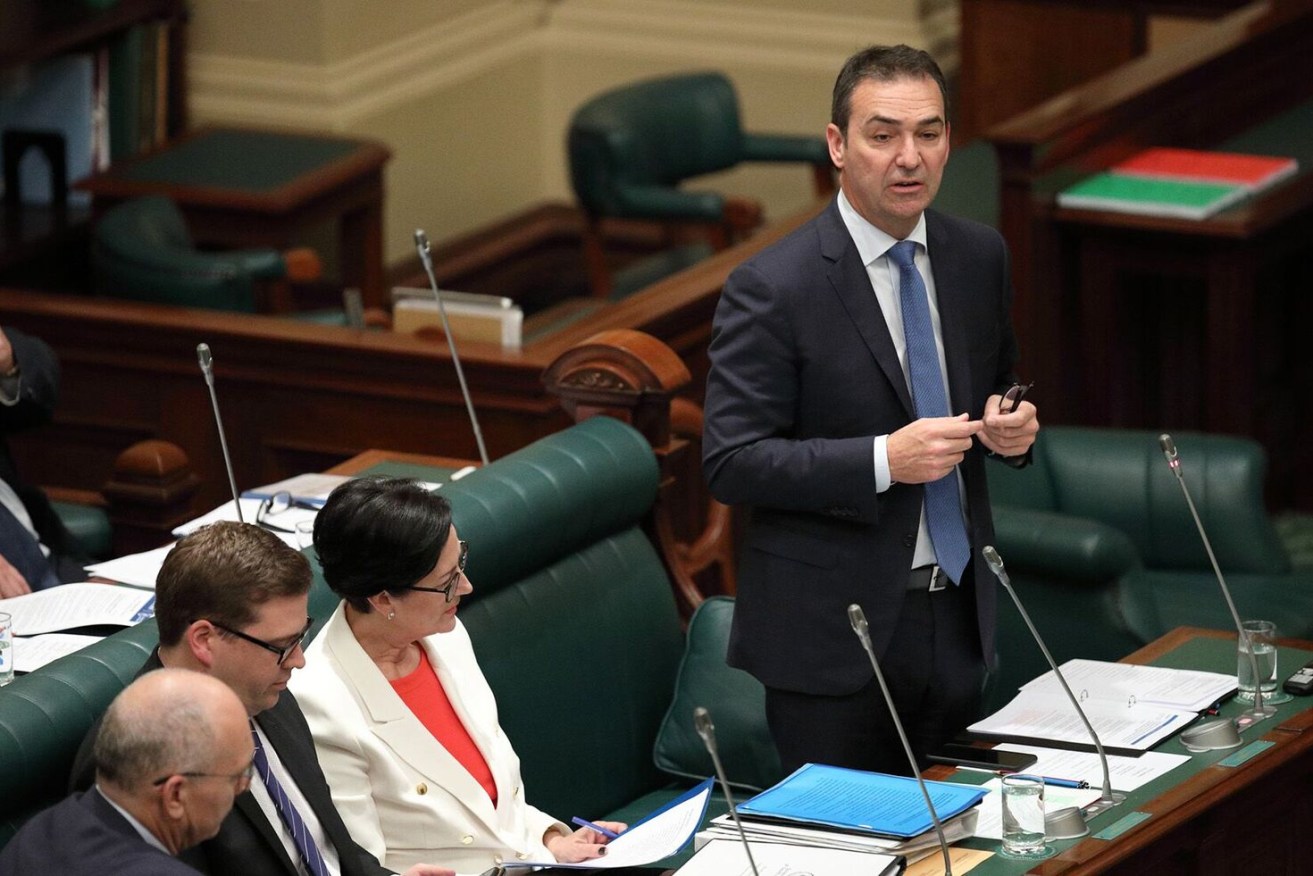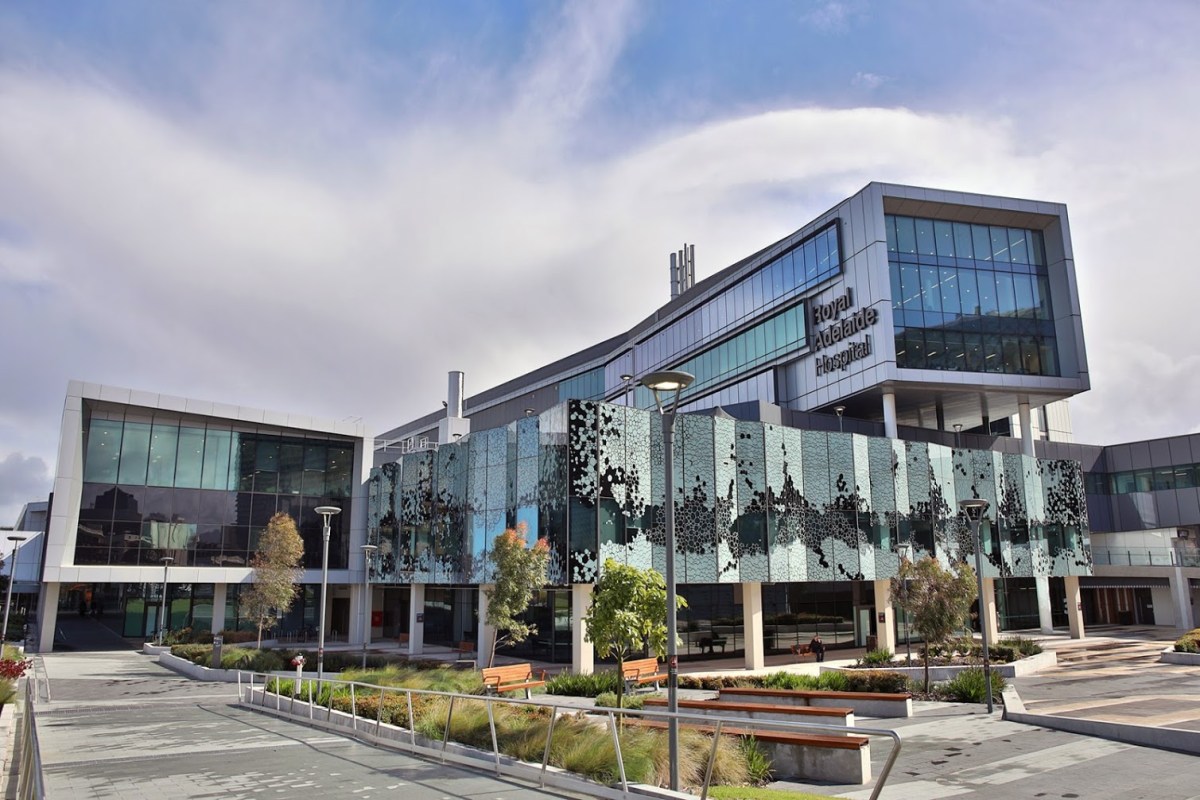The size of the economic task facing the Marshall Government
The Marshall Government will need to be given at least two terms for its economic prescription to restore South Australia’s long-lost competitive advantage, writes economist Richard Blandy.


Premier Steven Marshall in parliament this week. Photo: Tony Lewis/InDaily
According to the National Accounts published by the Australian Bureau of Statistics, South Australia’s share of the national economy was 8 per cent in 1990 and is 6 per cent today. When I was a student at the University of Adelaide in the late 1950s, South Australia’s share was nearer to 10 per cent.
Through most of my life, the South Australian economy has been performing worse than the Australian economy as a whole. In my lifetime, Adelaide has shrunk from third largest Australian city to fifth largest. We have just lost yet another state seat in the Commonwealth Parliament because of our slow growth. We are declining to irrelevance in Australia.
By the same token, Queensland (which we regarded as an economic joke in my student days), has increased its share of the national economy from 15 per cent in 1990 to 18 per cent today. Incidentally, Victoria’s and New South Wales’ shares of the national economy have also shrunk, but at a small fraction of the rate of South Australia’s.
Why has Queensland done so well, economically, and a smart place like South Australia done so badly?
Economic and jobs growth come from private business investment.
Even public sector jobs growth comes ultimately from private business investment, because business profits and wages provide the tax base that funds the public sector.
The faster the private sector grows, the faster the public sector can grow without getting into financial trouble.
Queensland has done so well economically because private business investment has increased from 13 per cent of Gross State Product in 1990 to 21 per cent today, whereas the share of private business investment in South Australia’s economy has increased only slightly – from 14 per cent of GSP in 1990 to 15 per cent today.

We’ll need three of these per year to match Queensland’s growth rate. Photo: Tony Lewis/InDaily
To grow at Queensland’s rate, we would have to have (approximately) Queensland’s private business investment share (21 per cent of GSP instead of 15 per cent).
Private business investment in South Australia is presently $15 billion annually. This would have to rise to $21 billion to match Queensland’s growth rate over the past quarter-century. This is an increase of 40 per cent – an extra $6 billion annually.
An extra $6 billion of capital investment is equivalent to the construction cost of three new Royal Adelaide Hospitals.
This is a huge increase and is not going to be achieved any time soon. Even a third of this increase – $2 billion or the equivalent of one new Royal Adelaide Hospital annually – would be a major achievement.
Such a large increase in business investment requires a transformation of private sector profit expectations from investment. The truth is that expected profit from private sector investment in South Australia is too low to sustain the needed investment to make the economy grow fast.
We know that this must be true because the Weatherill Government was quite open about the “bribes” it was paying to large, good-sounding companies to invest in South Australia. This would not be necessary if profits were high enough to attract them to invest here without a Government sweetener.
The scale of extra investment bought in this fashion with our money is pitifully inadequate in any case compared with the billions of dollars of extra investment needed. Many of these Government-chosen “winners” will not meet expectations, and this approach sets up offsetting disincentives for investment among businesses that do not have the ear (and wallet) of Government – businesses which understand that such bribes reduce the prospect of a general reduction in costs (and an increase in business profits more broadly).
Regrettably, this approach has been normal politics South Australian style for a very long time. Both parties have been guilty of it. Premier Weatherill was a past master at it. But nobody is clever enough to pick winners all of the time – or even most of the time – government boards least of all. The risk of picking a loser is why profits have to be high – to compensate for the cost of investing in business ventures that fail.
Market prices are set competitively. The only way to increase profits – and private sector investment and economic growth – is to get private sector costs down.
It will take at least a decade, even with such a good plan, to turn the state’s economy around…
Legendary Premier Tom Playford actually reduced some prices used by the Australian Bureau of Statistics in deriving the South Australian Consumer Price Index. The measured CPI in South Australia was actually less than the real CPI. As a result, South Australian wage increases were less than they would otherwise have been.
By this means, he cut real wages in South Australia relative to other states. He ran a very lean state public service. South Australian business regulation was sparing. He cut private sector costs and increased business profits in South Australia.
The resulting Playford economic boom was a private sector investment boom, especially in manufacturing, taking advantage particularly of the Commonwealth Government’s post-war increase in tariff protection. The extra sales came from interstate as well as from exports to overseas markets.
The Marshall plan for South Australia is outlined in the Liberal Party’s 2036 booklet, issued before the State election. It is an excellent plan, focusing on the right key things.
The plan says:
- The role of Government is to create the right environment to allow businesses to grow.
This will be achieved by:
- Reducing the tax burden on South Australian businesses and households.
- Cutting red tape and unnecessary regulation that inhibit growth.
- Investing in programs to increase export potential of businesses.
- Fostering entrepreneurialism by supporting the efforts of individuals and businesses in taking up and commercialising new innovations and technologies.
- Investing in productive infrastructure that drives the expansion of existing industries and unlocks new opportunities in the industries of the future.
To get this right, Steven Marshall’s Government will introduce two key new bodies – an independent Productivity Commission to advise on productivity-enhancing, cost-reducing initiatives, and an independent Infrastructure SA to advise on cost-reducing infrastructure initiatives.
The task ahead is huge. It will take at least a decade, even with such a good plan, to turn the state’s economy around from persistently falling behind the rest of Australia to persistently exceeding Australia’s economic and employment growth rate.
By the time of the next state election in four years’ time, even if Marshall’s Government sticks to its 2036 plan (which I believe it will, because all factions have agreed to it), there is little chance that South Australia will have already moved into such a position.
The state will be in economic transition.
The big question for South Australians at the next election will be whether they support going on with change towards a rapidly-growing, private sector-focused economy, or will they support reverting to our usual, government-dominated focus – picking winners, high taxes, high regulation and dependency on hand-outs from the rest of Australia, with slow economic and jobs growth.
Richard Blandy is an Adjunct Professor of Economics at the University of South Australia, an Emeritus Professor of Economics at Flinders University, and a regular contributor to InDaily.
This is an edited version of a talk given by the author to the Governor’s Leadership Foundation Program of the Leaders Institute of South Australia in April.




